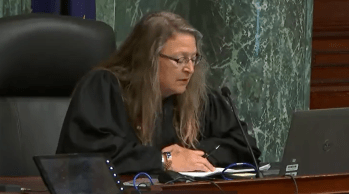
Source: Pawel Kacperek / Getty
INDIANAPOLIS (WISH) — A relatively new science studying the idea of hope looks to reverse some trends in mental health.
According to a Gallup Poll, since the COVID-19 pandemic, people are the most unhappy and stressed they’ve ever been.
The poll had three takeaways from those who participated in the survey.
1. People are having more negative experiences and fewer positive ones.
2. Stress, sadness, and worry are at their highest recorded levels.
3. People do not feel rested and are feeling less joy than at any other time in history.
On Saturday, Dr. Danielle Henderson, a clinical psychologist with Indiana University Health, joined News 8 at Daybreak to talk about what is commonly called the science of hope and what it means for people’s mental health.
“People are not having a lot of hope right now,” Henderson said. “(They’re) feeling down about different things about their life and having the sense that maybe things in the future won’t be different or won’t change”
According to Henderson, factors like weather, social media usage, the type of news people may run into, and feeling less connected to others can contribute to feelings of hopelessness.
She adds that winter isn’t always the easiest for people.
“A lot of us are working hybrid or maybe not still seeing our friends as much,” Henderson said. “(It’s) getting dark earlier, it’s cold in a lot of parts of the country so that can impact mood feelings as well.”
For those experiencing hopelessness, Henderson recommends turning to the small things.
“How can I find gratitude each and every day?” Henderson said. “How can I try to go through my life looking for the good things and the positive things in life? Being kind to people is always a big one and trying to maybe do things in smaller time segments.”
If those feelings persist for a few weeks, Henderson says that is the time to reach out to friends or talk to a professional.












